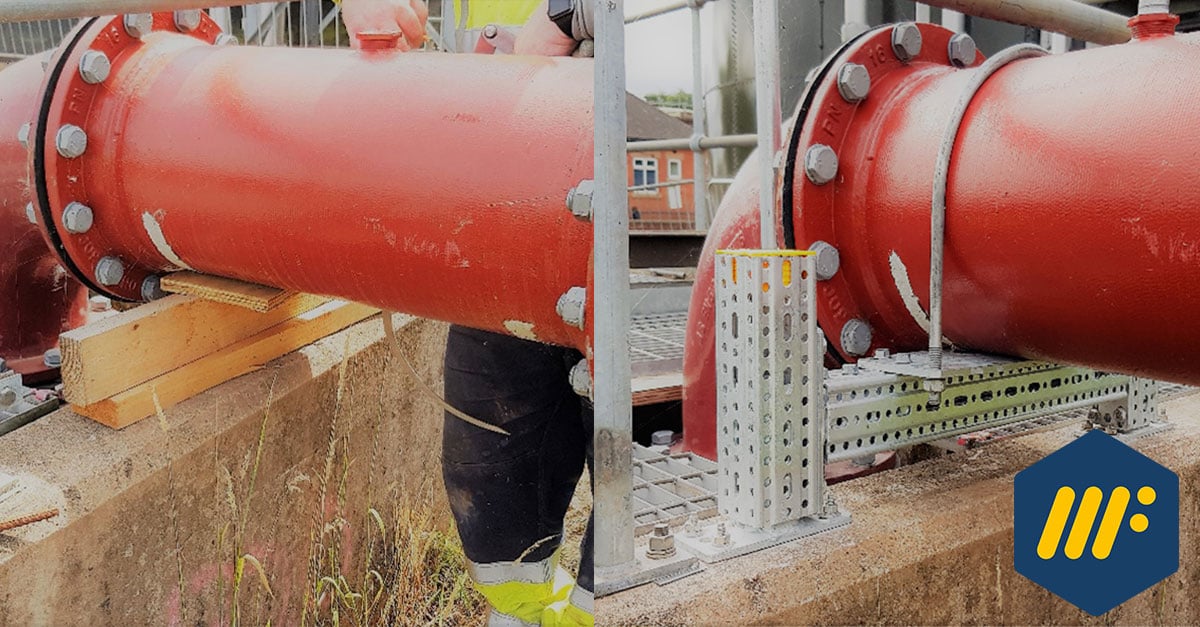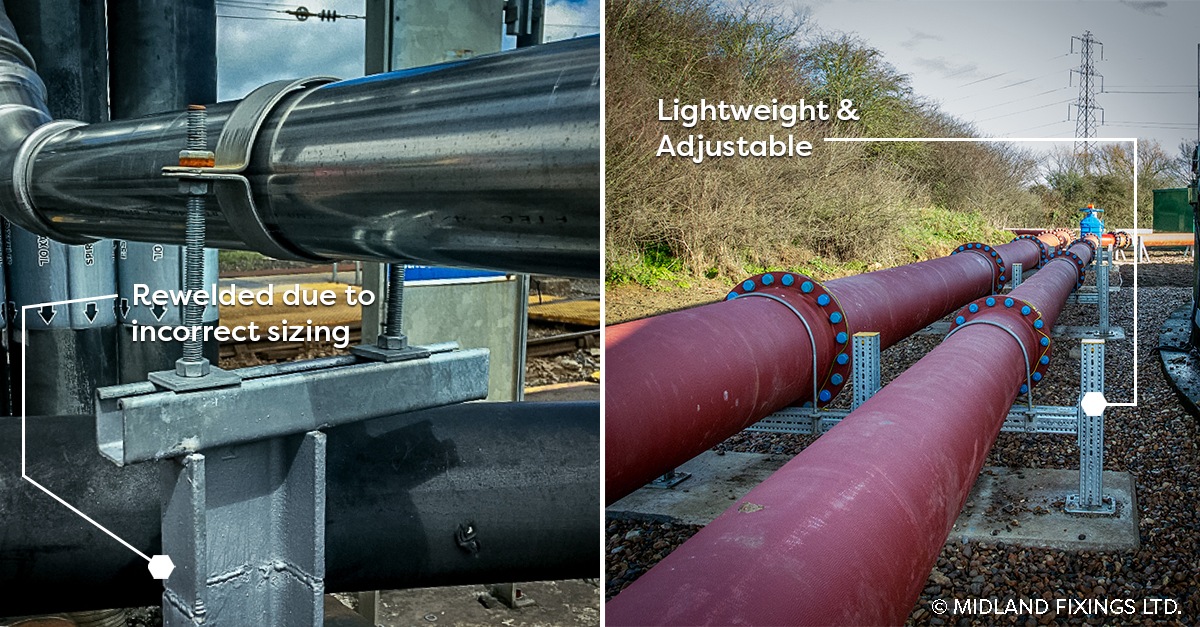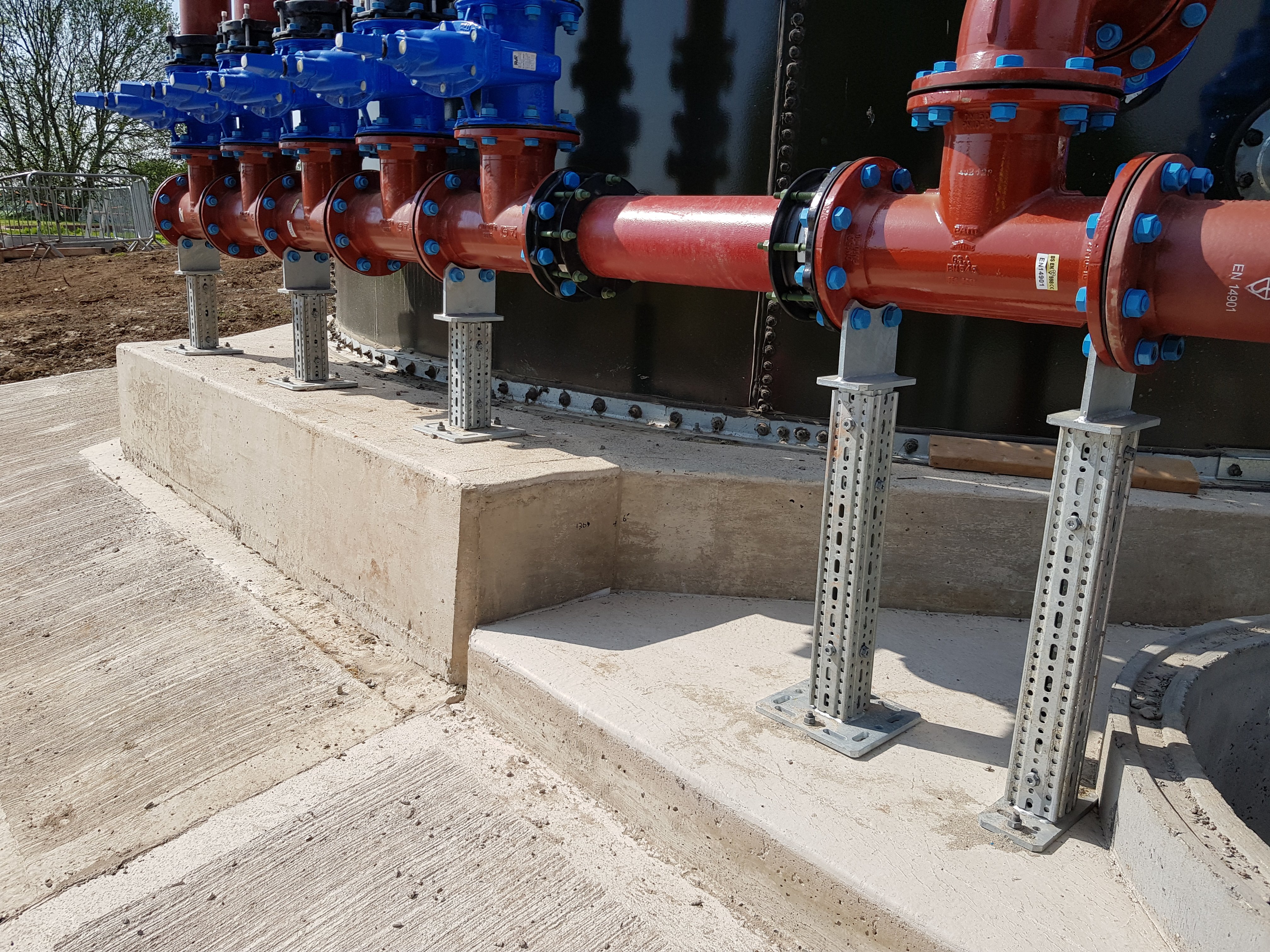In M&E, the world of pipe support systems is sometimes afflicted by misconceptions that often lead to inefficient choices and increased costs. With the plethora of contradicting information out there, it's understandable why these misconceptions emerge and cause confusion.
From the belief that a one-size-fits-all approach is sufficient, to the mindset that cheaper options are always better, debunking these myths and can help you make informed decisions that can save time, money, and ensure the safety and longevity of your projects.
This article aims to help you do that and equip you with the knowledge and insights needed to make informed choices in the industry, in particular when it comes to industrial pipe supports.
Here's a list of the myths to help you navigate the article:
- Myth 1: "Site Drawings Always Reflect Actual Environments”
- Myth 2: “Pipe Supports Must Be Modified Off-Site”
- Myth 3: “Cheaper Is Better”
- Myth 4: “Installation Is Always Time-Consuming”
- Myth 5: "Environmental Impact Is Insignificant"
- Myth 6: “Traditional Methods Are Always Reliable”
- Conclusion
Myth 1: “Site Drawings Always Reflect Actual Environments”
One of the most common misconceptions in the world of industrial pipe support systems is the belief that site drawings always provide an accurate reflection of the actual environment.
In many cases, site drawings, while valuable as reference materials, may not fully account for the dynamic and evolving nature of construction sites. Here are some reasons why site drawings can fall short:
- Site Conditions: The conditions on the ground can differ significantly from what is portrayed in the drawings. Unexpected obstacles, variations in terrain, or hidden utilities can all impact the feasibility of adhering to the initial plans.
- Change Orders: Construction projects are prone to changes and modifications, commonly known as change orders. These alterations may involve shifting the location of pipes, adding new elements, or adjusting existing structures. Such changes are often implemented on-site, and it can be challenging to update the original drawings promptly.
- Human Error: Despite best efforts, errors can occur during the drafting of site drawings. Misinterpretations, omissions, or inaccuracies can all lead to discrepancies between the drawings and the actual site.
- Timing: Drawings are typically created in the early stages of a project, often before the site is fully prepared for construction. As the site evolves, what seemed feasible on paper may encounter practical challenges.
So, what is the solution?
Well, many contractors prefer adhering to traditional fabrication methods wherein they have to send their industrial pipe supports back off-site for alterations and modifications, should the environment differ from the initial drawings. However, this is obviously time-consuming and not very cost-effective.
But is that the only way forward? This brings us to….
Myth 2: “Pipe Supports Must Be Modified Off-Site”
This myth revolves around the misconception that any modifications or adjustments required for industrial pipe support systems must be carried out at an off-site location, such as a fabrication shop or factory. In other words, it suggests that once pipe supports are manufactured or purchased, they cannot be further customized or adjusted on the construction site where they will be installed.
In reality, modern pipe support systems, like the innovative QMEXX modular pipe support system, challenge this myth. QMEXX is designed keeping adaptability in mind. Unlike rigid traditional support methods, QMEXX components can be easily modified and adjusted onsite without the need for extensive dismantling or welding. This flexibility allows installers to adapt the support system as needed to align with the actual site conditions and any change orders. This eliminates the need for waiting on revised drawings and offsite fabrication and ensures that installation can continue smoothly.

Myth 3: “Cheaper Is Better”
While the upfront cost of a utility pipe support system is undoubtedly a significant factor, focusing solely on the price tag can lead to a host of problems down the line.
Opting for the cheapest available industrial pipe support system might seem like a prudent financial decision initially. After all, it can help the project stay within budget, at least on paper. However, this approach overlooks several critical factors that can result in hidden expenses and complications.
Maintenance Costs: Cheaper systems often lack the durability and longevity of more robust alternatives. Over time, these systems may require frequent maintenance, repairs, and even replacements. The cumulative expenses of maintaining a subpar system can quickly surpass the initial savings.
In contrast, QMEXX systems are constructed using high-quality materials that are built to last. Their robust design ensures minimal wear and tear, reducing the need for frequent replacements and repairs, making their initial upfront costs a more worthwhile investment.
Efficiency and Downtime: Inferior pipe support systems can be challenging to install and modify, leading to prolonged project timelines. Delays in construction can result in increased labour costs, contractual penalties, and missed deadlines.
With the ability to be installed and modified onsite easily and efficiently, QMEXX not only saves valuable project time but also reduces labour costs and associated expenses.
Safety Concerns: Cheaper options may compromise on safety features and load-bearing capacities. This can pose significant risks to both workers and the integrity of the entire structure. Ensuring safety should always be a top priority in construction projects.
This is why QMEXX offers comprehensive loading reports is a standout feature in the realm of safety. These reports offer detailed insights into the structural integrity and load-bearing capacity of QMEXX components, with each part undergoing rigorous testing and analysis. This data-backed approach instils confidence in the system's ability to exceed industry safety standards.
Overall, making decisions solely based on initial cost savings can lead to a host of complications, hidden expenses, and safety concerns. QMEXX modular pipe support systems offer a compelling alternative by providing durability, efficiency, safety, and long-term savings. When considering utility pipe support solutions, it's essential to evaluate the holistic value they offer rather than fixating on the initial price tag.

Myth 4: “Installation Is Always Time-Consuming”
It's true that in the past, the installation of pipe support systems could be a time-intensive endeavour, particularly when using traditional fabrication methods. These methods often required extensive on-site labour, custom measurements, and welding, all of which contributed to extended project timelines. As a result, the belief that pipe support installations are inherently slow and cumbersome has persisted.
The myth that installing infrastructure pipe support systems is always time-consuming is debunked by the introduction of innovative solutions like QMEXX. QMEXX stands out in its ability to significantly reduce the time and labour required for installation. It offers the versatility to create structural supports of various types and sizes using readily available components. These components are fully galvanized, ready for installation, and can even be delivered the next day.
Thanks to its innovative multi-holed box section design, assembling a wide range of pipe supports, including post brackets, goal posts, cantilever brackets, and gantries, can be accomplished within minutes, all with the convenience of a single fastener. This eliminates the need for contractors to wait for traditional supports to be modified off-site, saving valuable time.
Moreover, QMEXX provides the flexibility for on-site modifications, avoiding the costly and time-consuming process of rework. Additionally, the reduced weight of QMEXX components, up to 80% lighter compared to traditional alternatives, simplifies the handling and installation process, requiring less on-site labour.
Myth 5: "Environmental Impact Is Insignificant"
In today's world, environmental consciousness plays a crucial role in decision-making across various industries. The construction and infrastructure sectors are no exception. When it comes to infrastructure pipe support systems, there is a common misconception that their environmental impact is insignificant. However, this myth needs to be debunked, as the choices made in this area can have far-reaching consequences for our planet.
To comprehend the environmental impact of utility pipe support systems, it's essential to consider their entire lifecycle, from manufacturing and transportation to installation and maintenance. Each phase of a system's existence has the potential to influence the environment in various ways.
- Maintenance: Over time, industrial pipe support systems may require maintenance, repairs, or replacements. Systems that degrade quickly can lead to more frequent replacements, which, in turn, increase the environmental impact.
Perhaps one of the most significant advantages of modern pipe support systems in terms of environmental impact is their long-term sustainability. Systems like QMEXX are built to last, reducing the need for frequent replacements and the associated resource consumption.
- Adaptability: The potential need for off-site modifications, welding and dismantling may result in a waste of materials, increased transportation, and resources.
systems like QMEXX often offer adaptability, allowing for adjustments and extensions without the need for entirely new installations. This flexibility further reduces the environmental impact by minimizing the need for additional materials and energy.
Modern modular systems like QMEXX are designed with sustainability in mind, offering efficient materials, transportation, installation, and long-term sustainability. By embracing these innovations, industries can not only reduce their environmental footprint but also benefit from cost savings and improved efficiency.
.jpg?width=3648&height=2736&name=P1110668%20(1).jpg)
Myth 6: “Traditional Methods Are Always Reliable”
Traditional pipe support methods, which often involve custom-fabricated supports, have been the industry standard for many years. These methods rely on welding, cutting, and assembling support components on-site to create a tailored solution for each project. The familiarity and long-standing use of these techniques may lead some to believe that they are the epitome of reliability.
While traditional methods have their strengths, they are not without their flaws. One of the primary drawbacks of traditional approaches is the time and labour required for fabrication and installation. Custom-fabricated supports demand skilled labour, welding expertise, and a significant amount of time to measure, cut, and assemble components on-site. This can lead to extended project timelines and increased labour costs.
In recent years, modern modular pipe support systems like QMEXX have emerged as a game-changer in the industry.
- Efficiency: One of the key advantages of modular systems is their efficiency. Unlike traditional methods that require extensive on-site fabrication, modular systems come with pre-engineered components that can be quickly assembled. This significantly reduces installation time and labor costs, making projects more cost-effective.
- Adaptability: Modular systems are designed with adaptability in mind. They feature standardized components that can be easily adjusted and modified to accommodate changes in project requirements. This adaptability ensures that the support system can evolve with the project, reducing the risk of costly alterations.
- Safety: Safety is paramount in any construction project. Modern modular systems prioritize safety by providing detailed load data and ensuring that components are designed to meet or exceed industry standards. This commitment to safety counters the misconception that traditional methods are inherently safer.
All in all, the belief that traditional pipe support methods are always reliable should be reevaluated in light of the ongoing transformations occurring within the construction industry. With the introduction of legislation like the Building Safety Act 2022, there is a growing emphasis on the requirement for robust evidence to substantiate installations in the built environment. While traditional methods undoubtedly have their merits, it is imperative to recognize the evolving landscape of the industry and the advantages that contemporary solutions offer. By embracing innovation and efficiency, we have the potential to not only enhance project outcomes but also reduce costs and prioritize safety, all while maintaining the essential element of reliability.

Conclusion
To summarise, by dispelling these myths and embracing innovation, the utilities and pipe support industry can progress towards efficiency, cost-effectiveness, sustainability, and safety, all while upholding the essential element of reliability. It's time to redefine our approach and make informed choices for the betterment of the industry.


